If you want to learn about UV Testing, then our guide is for you. It covers everything you need to know about UV Testing from definitions, test standards, applications, FAQs, and more. This guide will teach you everything you need to know – let’s get started:
1. What is UV testing?
In fact, a UV test is a test that measures exposure to ultraviolet light. Ultraviolet (UV) is a term used to describe electromagnetic radiation in which ultraviolet waves are shorter than human visible light. Ultraviolet rays are present in sunlight and can cause chemical reactions in certain materials.
This reaction makes them emit light, known as fluorescence. UV testing looks at the UV spectrum for commercial use and UV testing for UV protection.
Perform UV testing on your polymeric products or components (e.g. plastics, fiberglass, painted surfaces…) to assess your product’s ability to withstand the sun’s UV radiation over its expected lifetime while maintaining its usual performance. You can do this by placing the item in normal sunlight for an extended period of time to check the effect of sunlight on the polymer.
Often, when you develop a new product and need to verify its resistance to sunlight, some of your samples are subjected to accelerated UV testing in a UV testing chamber, artificially recreating prolonged UV radiation bombardment in a short and convenient time frame.
(Another Related Article: Environmental Test 101: A Full Guide)
2. Purpose of UV test
There are two uses of UV testing, one for commercial use and the other for human health.
1) Commercial use
The commercial use of UV testing is to determine the colorfastness of your products. Samples are sent to a UV testing laboratory where they are exposed to UV light in a controlled environment. It is possible to simulate months or years of exposure to UV radiation using solar simulators.
Paints that are exposed to sunlight for extended periods of time, such as exterior architectural paints or automotive paints, can be tested to determine the lifespan of the paint. This allows you to modify the chemicals used in their products if necessary. UV testing also allows you to increase the level of UV resistance on your product packaging.
If you are a textile manufacturer, you can also use UV testing to determine how long your products will remain colorfast. If the dyes added to your manufacturing process fade too quickly, your product may start to degrade. Knowing the lifespan of your dyes can help your company produce better products. Likewise, this is used for other materials such as plastic and paper.
2) Human health
Ultraviolet detection is also used in human health. Because overexposure to UV rays can cause skin cancer and sunburn. UVA rays are the most common and are the ones used for tanning. Since UVA rays are the leading cause of skin cancer, tanning salons use UV testing to ensure tanning beds are properly calibrated.
Sunburn is often caused by UVB rays, which are more intense than UVA rays. It affects the outermost layer of the skin and can be detected by a radiometer. Radiometers are used to measure UV radiation levels. It does this by determining how much radiation has been converted into energy. The higher the temperature in the radiometer, the more radiation is present.
(Another Related Article: Xenon Arc Chamber Vs QUV Tester: What’s the Difference?)
3. 10 fluorescent UV test standards you should know
Below is our compilation of the 10 most commonly used and referenced fluorescent ultraviolet (aka Fl/UV) testing standards.
1) ASTM G154
ASTM G154 is the standard practice for the operation of fluorescent Ultraviolet (UV) lamp apparatus for exposure to Nonmetallic materials. This practice provides general guidance for operating fluorescent UV equipment under various exposure conditions. Technically, ASTM G154 is equivalent to ISO 4892-3 for plastics and ISO 16474-3 for coatings. In general, ASTM G154 and ASTM G151 supersede the previous instrument-specific standard, ASTM G53.
2) ISO 16474-3
ISO 16474-3 is the paints and varnishes – Method of exposure to laboratory light sources. The ISO 16474 series on paints and varnishes specifies testing with fluorescent UV equipment, similar to the parts that focus on xenon gas exposure.
3) ASTM D4587
ASTM D4587 is the guideline for Fluorescent UV Condensation Exposure of Paints and Related Coatings. It includes a series of test conditions in accordance with ASTM Practices G151 and G154 for accelerated exposure testing of coatings and related products in fluorescent ultraviolet and condensation apparatus.
4) EN 927-6
EN 927-6 is the paints and varnishes – Paints and coating systems for exterior wood. It uses fluorescent UV lights and water to expose wood finishes to artificial weathering. This European Standard refers to ISO 16474-3, with a particular focus on wood coatings. An additional part of the EN 927 series on xenon exposure is under discussion, but work has not yet started.
In plastic
5) ISO 4892-3
ISO 4892-3 is the plastic – Method of exposure to laboratory light sources: Fluorescent UV lamps. The parts of the ISO 4892 series on laboratory aging of plastics specify fluorescent UV test equipment in a similar way to that specified for xenon gas exposure. A climate chamber-type instrument is also described in addition to condensing-type setups.
6) ASTM D4329
ASTM D4329 is the Standard Practice for Fluorescent Ultraviolet (UV) Exposure to Plastics. While ASTM D4329 and ISO 4892-3 cover the same topics, their technical content and instrumentation differ.
7) ASTM D4799
ASTM D4799 is the standard test method for accelerated weathering test conditions and procedures of asphalt materials. Standard Test Method for Accelerated Weathering of Asphalt Materials Test Conditions and Procedures Also known as the Fluorescent Ultraviolet and Condensation Method.
8) EN 1297
EN 1297 is the bituminous, plastic, and rubber sheets for roofing – Methods of artificial aging using UV radiation, high temperatures, and water. Fluorescent UV and condensation exposure are addressed in both standards but in slightly different ways. ASTM D4799 refers to basic ASTM G151 and G154 practices. However, EN 1297 refers to the basic standards ISO 4892-1 and ISO 4892-3.
9) ASTM D7238
ASTM D7238 is the test method for determining the effects of exposure to Fluorescent Ultraviolet Condensing Apparatus on Unreinforced Polyolefin Geomembranes. For the same application, there is also a European standard. UV lamps are specified according to ISO 4892-3 in EN 12224 – Geotextiles and geotextile-related products – Determination of resistance to weathering.
10) EN 13523-10
EN 13523-10 is water condensation and fluorescent UV light resistance of coiled metals. This European Standard deals with the basic principles of ISO 16474-3. The EN 13523 series consists of 29 parts, of which Part 19 deals with outdoor weathering exposure and Part 21 deals with the evaluation of outdoor test samples.
4. UV Testing Applications and Considerations
In fact, the ultimate goal of UV testing is to “compress time” so we can understand how your product will react to sunlight as it is exposed to more and more sunlight. To do this, we want to speed up the simulated sun; this process is called “accelerated weathering”. As with any other accelerated aging process, the goal is to best simulate the fastest aging rate possible without inducing reactions that would not occur under normal exposure conditions.
According to research studies, two popular types of UV weathering equipment currently in use are xenon arc lamps and fluorescent lamps. However each technique has advantages and disadvantages, and each technique can be used in a variety of test conditions, greatly changing the test results.
The xenon arc test is primarily used to evaluate color/appearance changes over time due to indoor/outdoor exposure to direct sunlight or UV rays through glass (indoor conditions).
There is no fixed algorithm that will allow us to accurately predict what the actual aging rate (also known as the “time compression factor”) will be. For xenon arcs, however, reasonable assumptions of at least an approximate order of magnitude can be made. The fluorescent photo accelerated aging test is primarily used to assess the retention of mechanical properties after exposure. This technique is used for comparison/authentication purposes. However, the scientific literature clearly shows that while this technique has its uses, it is poor at predicting time.
(Another Related Article: Temperature and Humidity Test 101: An Ultimate Guide )
5. Measuring the results of the UV test procedure using optical comparison
For most of you who need UV testing, we know that you are not interested in how the exposed samples look after the test is complete, but in how they look different from the unexposed samples.
The gloss and color measurements are typically taken at different exposure intervals up to the total duration of the exposure. In some cases, we can see significant differences between samples exposed at different time intervals, even though the color and gloss are the same. This can be explained by the fact that the human eye sees more than just gloss and color.
What’s more, reflection is divided into three types: specular reflection, scattering, and diffusion. A good example of a highly specular object is a mirror or perfectly polished metal.
Scattering Reflection: Most materials fall into this category; most light is reflected at a specular angle, but surface imperfections scatter the light, producing a bell-curve deflection. The bell curve shape will depend on the microscopic topography of the surface. A good example of diffuse reflection is a white paper.
(Another Related Article: Thermal Shock vs Thermal Cycling Test: What’s the Difference?)
6. Here are 10 tips for a successful UV testing project
What you need to know is that carbon-based materials and coatings often require UV testing. Because they react with exposure to UV radiation from sunlight or artificial light exposure. Depending on the radiation source, intensity, and other environmental factors, UV aging can cause damage ranging from fading to loss of material resistance. Important factors to consider to get the right answer when you need a UV test are:
- UV light source
A. The sun?
b. Artificial light sources? - Exposure indoors or outdoors?
- Ambient temperature? aggravating factor.
- Ambient relative humidity? aggravating factor.
- rain cycle? Erosion and cooling promote aging.
- Dark cycle? In some cases, this promotes chemical reactions that would not otherwise occur.
- Sample size; shape, thickness
- What adverse effects are you anticipating and working on preventing? Color changes or loss of mechanical properties may dictate the use of a different testing protocol.
- Predictable duration of real-life exposure.
- Do you require progressive sampling/measurement of samples? This will limit your testing costs if the material you are testing does not perform as expected.
(Another Related Article: Incline Impact Test 101: An Ultimate Guide)
7. Why do you need to do a UV test?
UV test, also known as UV aging test, is a process of simulating various factors involved in the actual use of your product and carrying out corresponding conditions to strengthen the experiment on the aging degree of your product. The UV aging test experiment is mainly aimed at plastic materials, and the common aging mainly includes light aging, damp heat aging, and hot air aging.
The ultraviolet aging test chamber uses fluorescent ultraviolet lamps as the light source and conducts accelerated weather resistance tests on materials by simulating ultraviolet radiation and condensation in natural sunlight to obtain the results of material weather resistance. By reproducing these conditions, environmental conditions such as ultraviolet rays, rain, high temperature, high humidity, condensation, and darkness in natural climates can be simulated.
Outdoor products are exposed to sunlight for a long time, so testing their yellowing resistance and aging resistance is very important. To know how long your product will last outdoors, you need to do a UV aging test mock test, which is also a UV test. For example, I have a client who is a supplier of pedestrian safety barrier. Since his products are exposed outdoors for a long time, it is necessary to know the approximate outdoor service life of pedestrian safety barriers. So UV aging test mock tests are also applicable to his products.
As UV testing in the laboratory is more intense than outdoor testing, the UV aging test can save your staff time, and you can obtain an estimate of your product’s outdoor service life in a short period of time.
UV ultraviolet aging test chamber, ultraviolet weather resistance test chamber quickly and realistically reproduce the damage of sunlight, rain, and dew to materials: in just a few days or weeks, the UV aging test chamber can reproduce the damage that takes months or years outdoors: including fading, discoloration, brightness decline, chalking, cracking, blurring, embrittlement, strength reduction, and oxidation. The UV aging test chamber is suitable for the aging test of non-metallic materials against sunlight and artificial light sources.
The light source uses 8 UV fluorescent lamps with a rated power of 40W as the light source. There are four ultraviolet fluorescent tubes on each side of the machine. (Users can choose and configure UVA-340 and UVB-313 light sources.).
(Another Related Article: How to Select a Temperature Humidity Test Chamber?)
8. UV test FAQ
Here are some frequently asked questions about UV testing for your reference.
1) What is the acceleration factor for xenon arc or UV testing?
For decades, weather experts have tried to find this magic number, but none exists. No matter how the question is phrased, the answer is always the same: “It depends!” It depends on one simple reason: nature is not as reliable as laboratory equipment!
When performing weather meter tests we use calibrated lamps, specific filters, very precisely monitored irradiance, purified water, controlled atmosphere (humidity and temperature), and predefined light, dark, and rain cycles.
On the other hand, outdoor exposure depends on when and where you are: latitude, altitude, cloud cover, humidity, smog, rain, temperature, orientation, season, time of day… all these parameters have a significant impact on the “efficiency” of outdoor exposure, hence the acceleration factor. Multiple published studies and standards yield an average acceleration factor of 9 between accelerated laboratory exposures in harsh conditions such as Florida or Arizona.
For example, to evaluate the performance of anti-graffiti coatings, ASTM D6578 requires 24 months of outdoor exposure (Florida or Arizona exposure) or 2000 hours of accelerated weathering. In this case, they assumed an acceleration factor of 8.8 (2 years (17520 hours)/2000 hours)
In regions with more temperate climates (such as Boston, Montreal, or Chicago), the acceleration factor increases. On a standardized polystyrene coupon, we found an acceleration factor of 20 or more for this climate type. These average acceleration factors are only orders of magnitude because they can vary widely from one product to another, or from one location to another. Feel free to contact our experts to discuss a practical scenario that best suits your product.
2) I want to do an accelerated photoaging test, What type of machine should I use?
There are 3 main types of machines at your disposal: carbon arc, xenon arc, and fluorescent UV testers. Carbon arc is the oldest accelerated aging technique (developed in the 1930s) and is now considered inaccurate and obsolete. The two types of machines currently in use are xenon arc testers and fluorescent testers.
However, one is not better than the other, they just serve different purposes. Fluorometers focus only on the ultraviolet radiation emitted by the sun, whereas xenon arc testers simulate the full sun’s spectrum. If your main concern is product discoloration (fade), xenon arc lamps are your best choice. You should use a fluorescence tester if you are concerned about degradation of polymer properties (loss of mechanical strength, yellowing, cracking).
3) What is the difference between xenon arc testing and fluorescent (UV) testing?
Xenon arc testers are the best solar simulators available today. By using the right combination of filters, we can very accurately simulate sunlight (range of wavelengths and relative magnitude of each wavelength) under outdoor or indoor conditions. Using irradiance (the amount of light emitted), humidity, rainfall, and dark periods, we optimize and accelerate the fading of your product.
Xenon arc lamps are the best choice for:
- Color loss assessment (fading of dyes and pigments)
- Materials that respond to changes in humidity (textiles)
- Indoor exposure simulation (furniture or household products)
- Outdoor exposure simulation
The fluorometer is the best UV simulator available today. Polymers and their additives such as antioxidants mainly react to UV radiation emitted by the sun in the 300-400 nm range. Combining these photochemical reactions with condensation effects can cause polymer degradation (loss of gloss, change in mechanical properties, yellowing, and cracking).
Since the most damaging UV radiation (below 310 nm) is filtered by window glass, fluorometers are best suited to simulate outdoor exposure of polymers when the main concern is structural changes in the polymer itself. For indoor exposure and fading evaluation, xenon arc lamps should be preferred.
4) What is the relationship between xenon arc and fluorescent (UV) testing?
There was no correlation between the two types of exposure because they have different emission spectra and environmental parameters (ie: one with a condensation cycle, simulating dew, and the other with a rainfall cycle). You can still find old standards on the internet that use the total energy emitted during the test (eg in megajoules) as the test standard. Since then, testing methods have improved substantially, and we recommend against using the test standard.
The misconception of using the total energy received can be compared to weightlifting. If I lift 10 pounds 50 times, I’m lifting a total of 500 pounds. Does that mean I can lift 500 lbs at a time? The answer depends entirely on how you break down 500 pounds.
The same logic applies to emitted light: receiving 20 times 1 joule of light at 325 nm is completely different from receiving 20 joules of light at 655 nm. The overall average is the same, but the information is too irrelevant to draw conclusions. What you need to know is the energy at different wavelengths.
In more technical terms, 1 joule of UV light at 325 nm can severely damage a polymer, but 1 joule of visible light at 655 nm will not because the polymer itself has no “receiver” that can use visible light and induce temporary or permanent structural modifications by electrons jumping between energy levels
5) When it comes to xenon arc testing versus carbon arc testing, what is the difference?
Carbon arc testers were introduced in the 1930s and they were the best solar simulators of their time. Carbon arc testers are pioneers in accelerated weathering technology. Although there is now a better technology: xenon arc lamps, some standards still refer to this technology. The xenon arc can be considered a “solar simulator 2.0” compared to the carbon arc. In laboratory tests, the carbon arc was replaced by the xenon arc in the 90s.
6) Are xenon arc tests and carbon arc tests related?
According to the investigation, there is no correlation between these two types of exposures because they have different emission spectra. Furthermore, the carbon arc emission spectrum simulates the solar spectrum poorly because of two major mismatches: the carbon arc’s short wavelength cutoff is too low. Carbon arc lamps emit UV light down to 260 nm when the natural solar spectrum cuts off at 290 nm.
If a polymer or some of its additives reacts between 260 and 290 nm, it can cause severe and impractical damage because this type of damage would never occur in real life. The carbon arc spectrum has a peak of irradiance around 380 nm
Given that the shorter wavelengths carry the most energy, and that the xenon arc better mimics the solar spectrum, these two issues make carbon arcs a poor choice. Back in the 1930’s the Carbon Arc was the best solar simulator, but it was quickly replaced by the Xenon Arc in the 70s.
7) How many samples should be tested for each sample?
- Non-destructive testing
If you are only performing non-destructive evaluations such as color or gloss measurements, you only need to submit 1 sample per sample. In this case, the same sample will continue until the end of the study. If you want to take samples at specific time intervals, the minimum number of samples will depend on the total duration of your study and the number of time intervals you have.
- Destructive testing
If you want to do destructive testing (tensile, flex, impact, adhesion), you usually need at least 5 samples per test. Considering that the machine can hold 48 to 60 samples, you must choose the interval between destructive tests wisely if testing multiple comparison products at the same time.
Keep in mind that the sample size for anisotropic materials must be doubled when both directions must be tested.



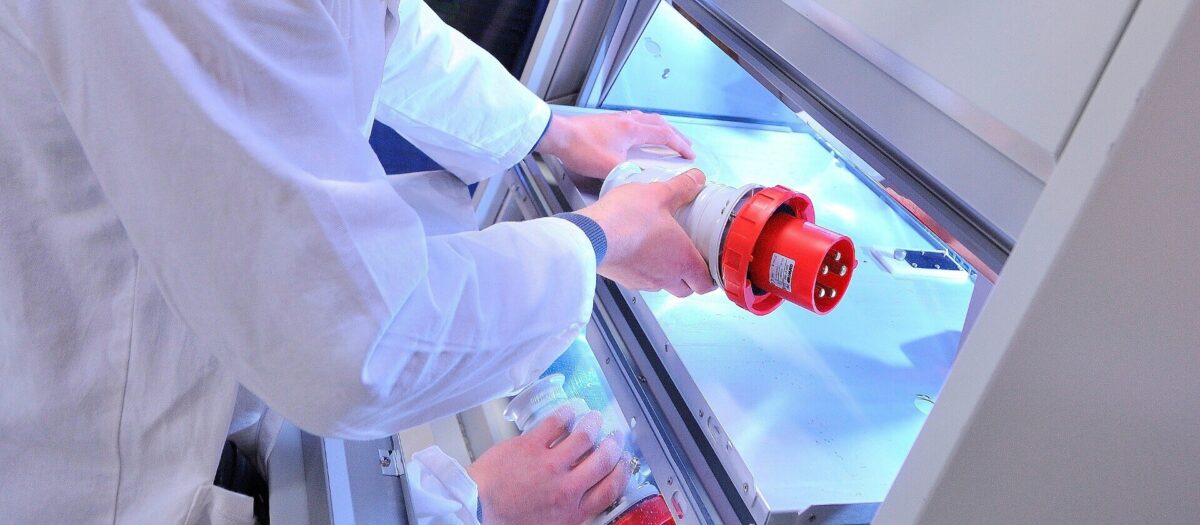

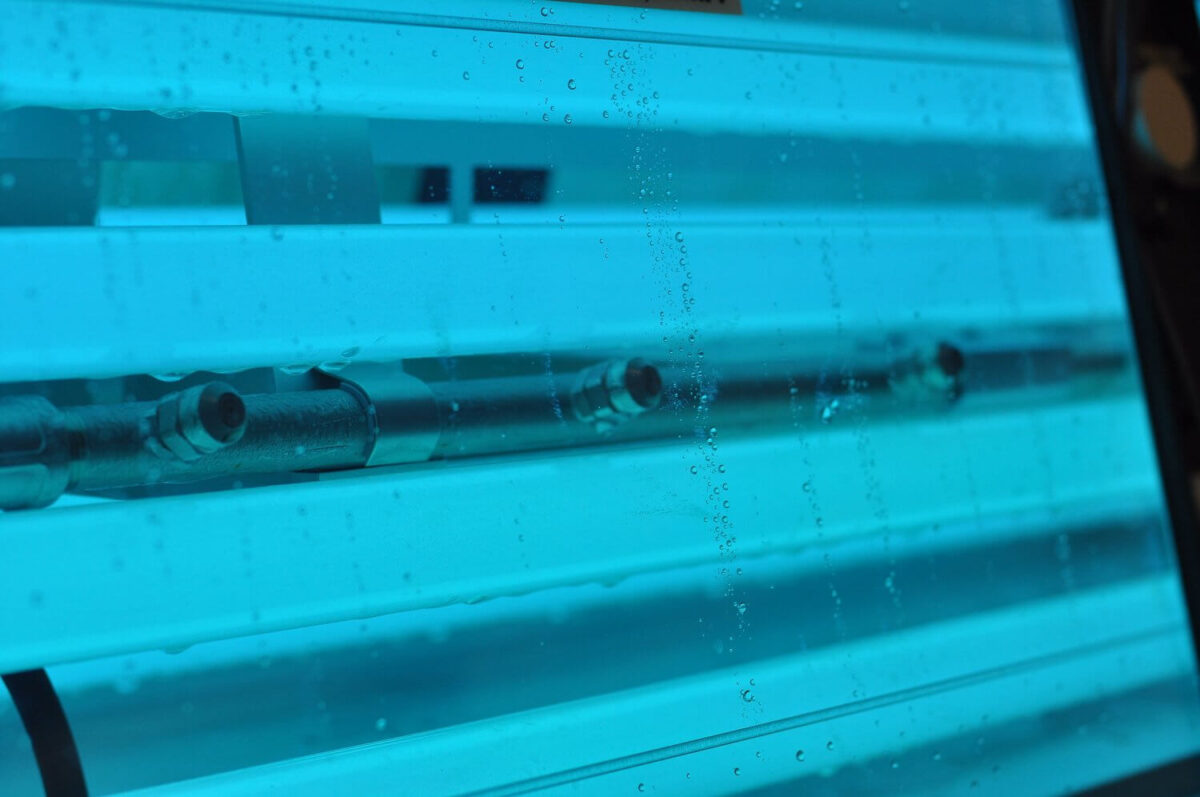

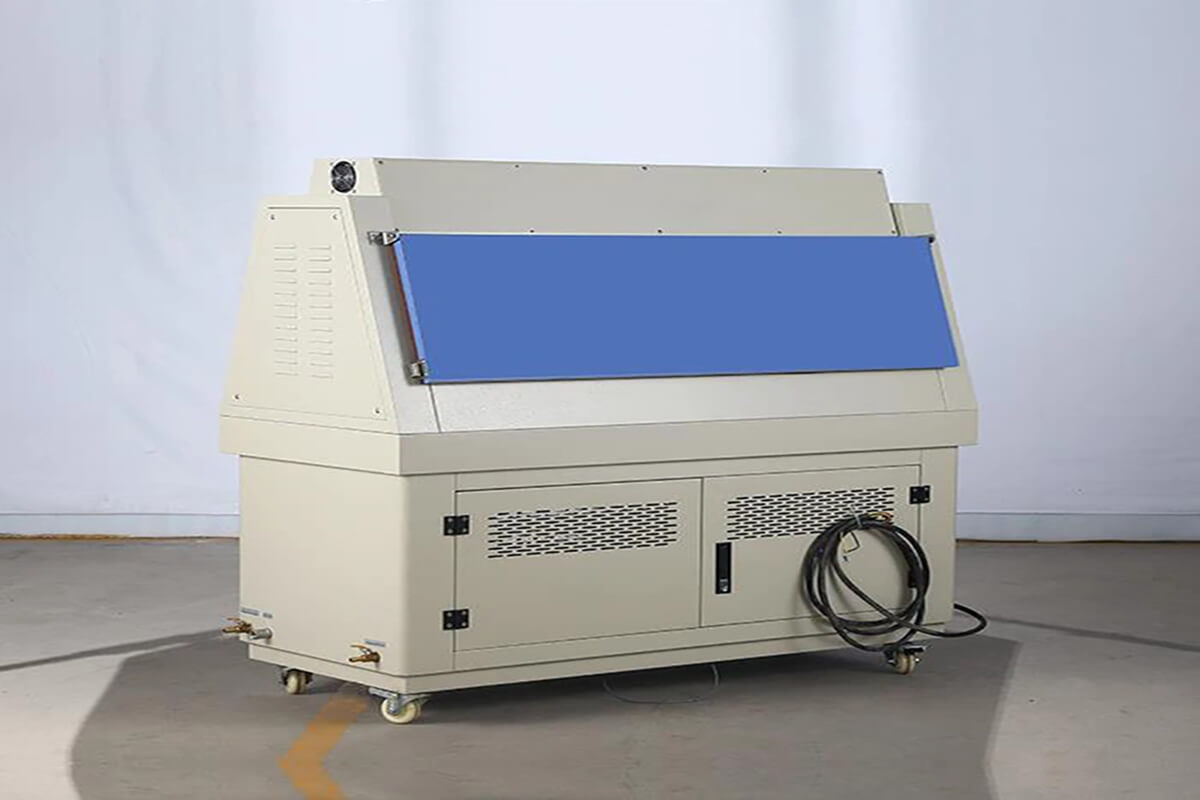
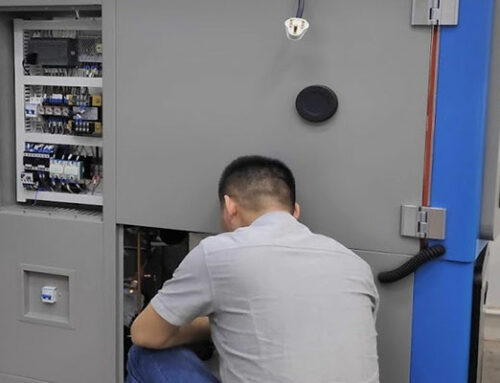

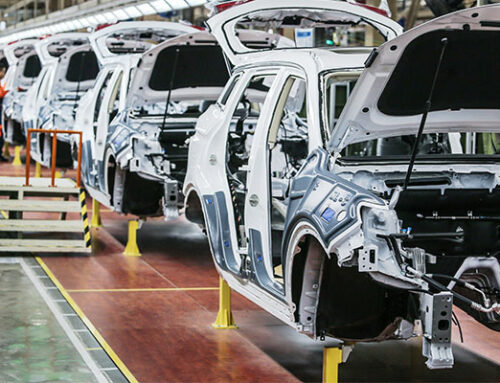
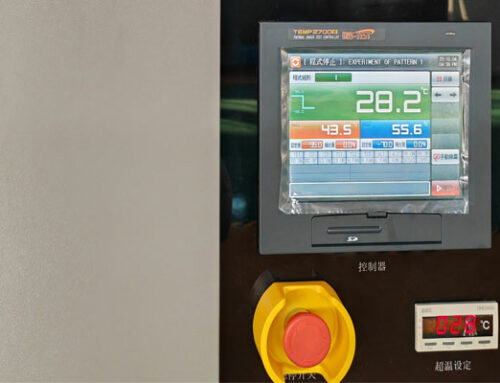
Leave A Comment